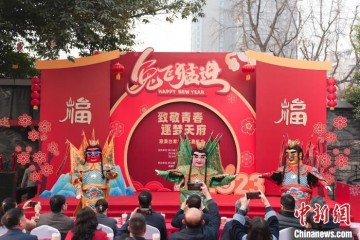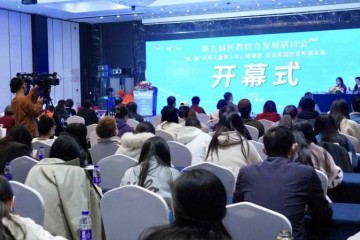
小学阶段必备的英语语法常识点,时态,句型,常用词大全,都在这儿啦!英语常识必定要多读多背才干记牢哦,快来看看有哪些内容,保藏起来吧!
1现在进行时
表明正在发作的工作或进行的动作,常与now,listen,look等词连用,结构是主语+be动词(am, is, are)+动词ing.
如:It is raining now.
外面正在下雨
It is six o’clock now.
现在6点了
My parents are reading newspapers in the sitting room.
我爸爸妈妈正在客厅看报纸
Look! The children are having a running race now.
看!孩子们正在赛跑
问句将be动词移前,否定句在be动词后+not.
2一般现在时
表明常常重复发作的工作或动作,常与often, usually, sometimes, always, every day(week year…)>
结构是主语+动词原形;当主语为第三人称奇数即he,she, it, Tom, my mother, the boy等词时,动词后加s或es.
如:We have an English lesson every day.
咱们每天都要上英语课
Do the boys run faster than the girls? Yes, they do.
男孩比女孩跑得快吗?是的
问句借助于do, does否定句借助于don’t, doesn’t,后边动词必定要复原。
3一般曩昔时
表明发作在曩昔的工作或存在的状况,常与just now; a moment ago; … ago; yesterday; last ( week; month; year; Monday; weekend); this morning等词连用。
结构是主语+be动词的曩昔式(was; were)或主语+动词的曩昔式。
留意:be动词与动词曩昔式不行一起运用。
如:My earphones were>我的耳机刚刚还在呢。
Where were you last week? I was at a camp.
你上个星期去哪了?我去野营了
What did you do yesterday? I visited a farm
你昨日去干嘛了?我去观赏农场了。
问句有be动词将be动词移前,没有be动词借助于did,后边动词复原;
否定句有be动词在后边加not,没有借助于didn't后边动词复原。
4一般将来时
表明即将计划发作的工作或动作,常与tomorrow, next week(year; Tuesday…), this week( weekend ;evening; afternoon;…)today等词连用。结构是主语+be(am, is, are) going to + 动原或主语+will +动原。
如:What are you going to do tomorrow? I am going to have a picnic.
你明日要去干嘛?我要去野餐。
The childre are going to have a sports meeting next week.
孩子们下个星期将参与运动会。
Tom will/is going to see a play with his father this evening.
Tom今晚将和爸爸妈妈去看表演。
问句将be动词或will移前;否定句在be动词或will后加not.
5神态动词
can; can’t; should; shouldn’t; must; may后必定加动词原形。
如:The girl can’t swim, but she can skate.
女孩不会游水,可是会滑冰
Don’t talk in class, you should listen to the teacher carefully.
不要再课上说话,你应该仔细听教师讲。
6祈使句
必定祈使句以动词原形最初;否定祈使句以don’t加动词原形最初。
如:Open the box for me ,please.
请为我翻开盒子。
Liu Tao! Please get up earlier tomorrow.
刘涛,明日请早点起床!
Don’t walk>不要在草地上走!
Helen! Don’t climb the tree,please.
海伦!不要爬树。
7go的用法
去干嘛用go +动词ing
如: go swimming; go fishing;
go skating;
go camping;
go running;
go skiing;
go rowing…
8比较
than 前用比较级;as…as之间用原级。
如:My mother is two years younger than my father.
我妈比我爸年青两岁。
Liu Tao jumps as far as Ben.
刘涛跳得和本相同远。
9喜爱做某事
用like +动词ing或like+ to + 动原。
如:Su Yang likes growing flowers.
苏阳喜爱莳花。
The children like to play with lanterns at Spring Festival.
孩子们喜爱在新年去玩花灯。
10想要做某事
用 would like +to+动原或want + to +动原。
例:I’d like to visit the History Museum.=I want to visit the History Museum
11some
用于必定句中,在否定句和问句中改为any,但当表明含蓄口气时仍用
如:Can I have some writing paper? Would you like some orange juice?
12代词
人称代词主格做主语用一般放在句首或动词前,主格分别是 I you he she it we you they。
宾格做宾语用,一般放在动词或介词后
如:Open them for me.Let us …, join me等。
宾格分别是me you him her it us you them。
描述词性物主代词放在名词前,不能独自运用,分别是my your his her its our your their
名词性物主代词相当于形物加名词,它只能独自运用后边欠好加名词,分别是mine yours his hers its ours yours theirs。
13介词
介词后要么不加动词,加动词只能加动词ing方式
如:be good at running;
do well in jumping;
14时刻介词
时节前,月份前用介词in
如:in summer;in March
详细的哪一天如星期几,几月几日用介词on
如:on Saturday;>在几点钟前用介词at
如:at a quarter to four;
只在上下午晚上用in
如:in the morning/ afternoon/ evening;
但在夜间用at night。
另:时节,月份和星期前欠好加the.
15名词复数构成的办法
有规矩的有:
(1)直接在名词后加s
如orange—oranges; photo—photos;
(2) 以x, s, sh, ch 结束的加es
如:box—boxes; glass—glasses; waitress—waitresses; watch—watches;peach--peaches
(3) 以子音字母加y结束的改y为i加es
如:study—studies;library—libraries; hobby—hobbies; family—families;
(4)以f, fe结束的改f, fe 为v+es如:knife—knives; thief—thieves(注:以o结束的咱们学过的只要mango加es, mango—mangoes其他加s,)
不规矩的有:
man—men; woman—women; people—people; child—children
16动词第三人称奇数的构成
(1)直接在动词后加s
如:run—runs; dance—dances
(2)以s,sh,ch,o结束的加es
如:do—does;go—goes;wash—washes;catch—catches
(3)以子音字母加y结束的改y为i加es
如:study—studies; carry—carries;
17现在分词的构成
(1)直接在动词后加ing
如:sing—singing; ski—skiing;
(2)双写词尾加ing
如:swim—swimming; jog—jogging;run—running;
(3)以不发音的e结束的去e加ing
如:ride—riding; dance—dancing; make—making;
18规矩动词曩昔式的构成
(1)直接在动词后加ed
如:clean—cleaned; milk—milked; play—played;
(2)以e结束的直接加d
如:dance—danced; taste—tasted;
(3) 以子音字母加y结束的改y为i加ed
如:study—studied;carry—carried;
(4)双写词尾加ed
如:stop—stopped; jog—jogged;
不规矩的有:am,is—was; are—were; do,does—did; have,has—had; go—went; meet—met; sit—sat; see—saw; get—got; tell—told; run—ran; come—came; steal—stole; read—read;
19描述词副词比较级的构成
规矩的:
(1)直接在描述词或副词后加er
如;small—smaller; low—lower;
(2)以e结束的加r
如:late—larer;
(3)双写词尾加er
如:big—bigger; thin—thinner; fat—fatter;
(4) 以子音字母加y结束的改y为i加er
如:heavy—heavier; early—earlier;
不规矩的有:
good, well—better(第一流为best); many, much--- more(第一流为most); far---farther;
20rain与snow的用法
(1)作为名词意思是雨水和雪是不行数名词
如:There is a lot of rain there in spring. 那儿的春天有许多雨水。
(2) 作为动词意思是下雨和下雪,有四种方式分别是:
动词原形rain, snow;
第三人称奇数rains ,snows;
现在分词raining;snowing
曩昔式rained;snowed;
如:Look! It is raining now. 瞧!天正在下雨。
It often rains in Nantong in summer.南通夏天常常下雨。
It rained yesterday.昨日下了雨。
It is going to rain tomorrow. 明日要下雨。
(3)描述词为rainy 和snowy 意思是有雨的和有雪的
如:It is often rainy here in spring.这儿的春天常常是有雨的。
If it is rainy tomorrow, I’ll stay at home.假如明日是有雨的,我将呆在家里。
21比较级
留意只要同类事物才可进行比较。
如:My eyes are bigger than hers.Your school bag is heavier than mine. My computer is nicer than Nancy’s. My brother is stronger than me.
22have, has
表明或人有(has用于第三人称奇数);There is/ are;
There was/ were 表明某地存在有
留意There be 句型的就近准则
奇数或不行数用there is /was;
复数用there are/ were.
23自身便是复数的词
眼镜glasses; 耳机earphones; 鞋shoes;裤子trousers等词自身是复数。
如:My glasses were>但假如表明这双,这副,一双的时分用奇数
如:There is a pair of chopsticks>
24五个元音字母分别是Aa, Ee, Ii, Oo, Uu;
25一个的用法
a用于子音前不是子音字母前;an 用于元音前不是元音字母前。
如:There is an ’s’, a ‘t’, a ‘u’, a ‘d’ ,an ‘e’, an ‘n’,and a ‘t’ in the word ‘student’.
26时刻表明法
有两种:
(1)直接读时钟和分钟。
如6:10读成 six ten; 7:30读成seven thirty; 8:45读成eight forty-five;
(2)用to与past表明。
在半小时包含半小时以内用几分past几点
如:6:10读成ten past six; 7:30读成half past seven;
过了半小时用下一个钟点差几分
如7:45读成a quarter to eight; 9:50读成ten to ten;
27基数词变序数词的办法
基变序有规则,结束加上th; 一二三特别例,结束字母t、d(即first, second, third);
八去t, 九去e, ve要用f替(即eigh—eighth; nine—ninth; five-- fifth ;twelve—twelfth);
ty改y为ie后加th别忘记(即整十数如twenty—twentieth;forty—fortieth);
几十几十位为基个位为序(如第二十一为twenty-first)。
别的着重序数词前必定要加the。
28日期的表明法
用the+序数词+ of +月
如:三月三日 the third of March;
12月25日 the 25th of December.
29both 表明两者都
如:My parents are both teachers.
all表明三者以上都
如:The students are all very excited.
30节日的表明法
有day的节日前用on.
没有day的节日前用at,
如:at Christmas;>
31激动振奋的
excited表明激动的,振奋地主语是人;
exciting表明令人激动的,令人振奋的主语是工作
如:The running race is very exciting, so all the students are very excited.
赛跑十分令人激动,因而一切的学生都很激动。
32比较
两者比较用比较级,三者以上比较用第一流
如:Who runs faster, the boy or the girl? The boy does
谁跑得更快,男孩仍是女孩?男孩。
Which season do you like best? I like autumn best.
你最喜爱哪个时节?我最喜爱秋天。
Which season do you like better, summer or winter? I like winter better.
你更喜爱哪个时节,夏天仍是冬季?我更喜爱冬季。
33动词复原的用法
前面用了do, does did, don’t, doesn’t didn’t后边动词要复原。
如:Did she watch TV last night?
Helen doesn’t like taking photos.
34到了
抵达用get to
但留意到家,到这儿,到那儿不行以加to
如:get home; get here; get there,
别的go home; come here; go there也相同。
35长着和穿戴
长着什么用with
如:the girl with big eyes 大眼睛的女孩;
穿戴什么用in
如:the man in black穿黑衣服的男人
或:the woman in the white skirt 穿白色短裙的妇女
36让或人做某事
用let sb后加动词原形
如:Let’s water the flowers together.
是该做…的时分了用It’s time for+名词或It’s time to +动原。
协助或人做某事是help sb with sth
如:帮我学英语是 help me with my English
37树上
外来的东西在树上用in the tree
如:the bird in the tree;
树上长的用on the tree
如:the apples>
38运动和乐器
球类之前不加the;
乐器之前有必要加the
如:play the piano; play football
39get后加比较级表明变得更怎么样
如:get stronger; getlonger

 筑梦起航,医路向前——中国新高教集团举办2024届毕业生赴中国人民解放
筑梦起航,医路向前——中国新高教集团举办2024届毕业生赴中国人民解放 南京英国留学中介筛选指南,谁家扛住了“辣评”?
南京英国留学中介筛选指南,谁家扛住了“辣评”? SOS ! 高考后申请美国本科来得及,但是这些事情你不能放过!
SOS ! 高考后申请美国本科来得及,但是这些事情你不能放过! 天津传媒学院无终艺术馆揭幕开馆
天津传媒学院无终艺术馆揭幕开馆 ACAA聚焦数字科技,为行业发展注入新活力
ACAA聚焦数字科技,为行业发展注入新活力 港澳台青年文化嘉年华在蓉举办
港澳台青年文化嘉年华在蓉举办 2023年度国考即将开考这些事项考生要了解
2023年度国考即将开考这些事项考生要了解 医教结合研讨会深度探讨孩子学习困难心理健康教育问题
医教结合研讨会深度探讨孩子学习困难心理健康教育问题